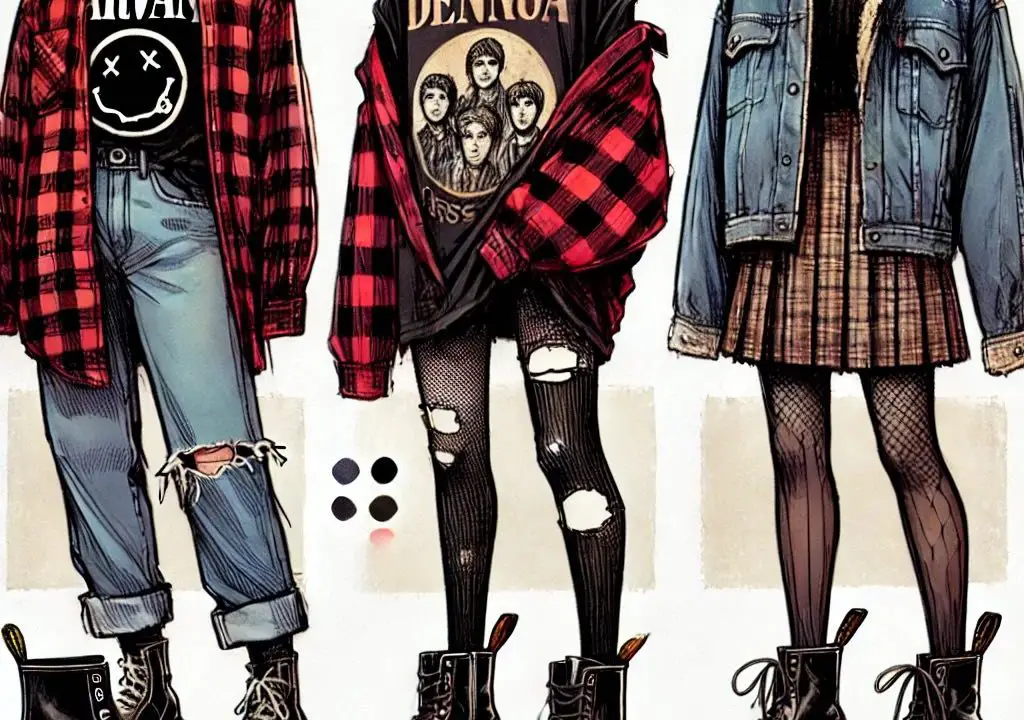In the early 1990s, a seismic shift occurred in both music and fashion. Sparked by a band from Aberdeen, Washington. Nirvana not only changed the face of rock music but also left an indelible mark on the fashion world. Their journey from garage band to global phenomenon reshaped cultural norms and personal style for an entire generation. This blog post explores Nirvana’s rise to fame. Including their impact on fashion, and the lasting legacy that continues to influence style and business today. Let’s dive into the grunge revolution and its far-reaching effects.
The Rise of Nirvana and Grunge Fashion
Nirvana, formed in 1987. With Kurt Cobain and Krist Novoselic at its core, was later joined by Dave Grohl on drums in 1990. Their 1991 album “Nevermind” catapulted them to international stardom, with “Smells Like Teen Spirit” becoming an anthem for a generation. As Nirvana’s music gained traction, so did their distinctive style, which came to be known as “grunge fashion.” This look was characterized by flannel shirts, distressed jeans, and combat boots or Doc Martens. Embracing a DIY ethos that matched the band’s anti-establishment attitude. The style rejected the polished looks of the 1980s. In favor of a more authentic, lived-in appearance that resonated with youth culture. Grunge fashion quickly spread from the streets of Seattle to become a global phenomenon. Influencing both street style and high fashion.
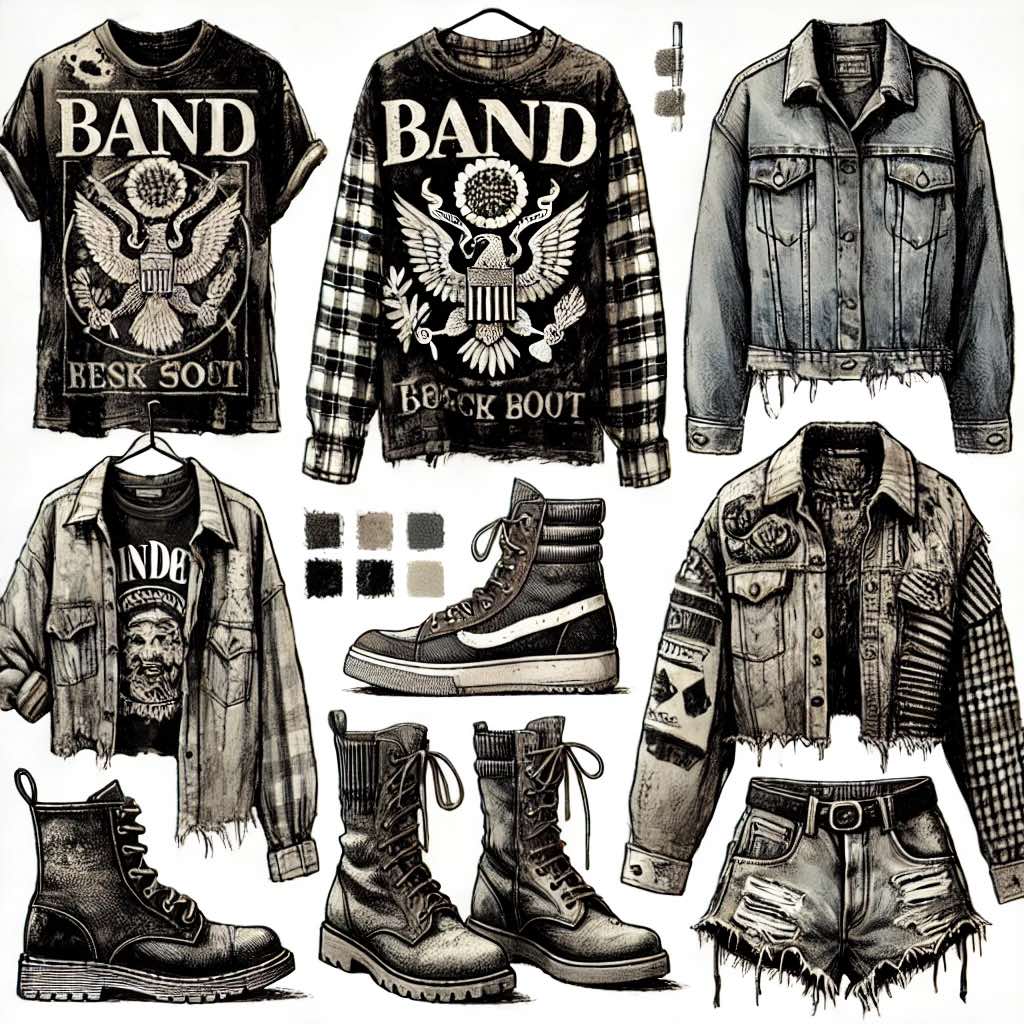
Elements of Grunge Style
Grunge fashion wasn’t just about specific items of clothing; it was a whole aesthetic and attitude that encompassed various elements. Layering was key, with multiple pieces combined for a relaxed, effortless look. That often included oversized clothing deliberately chosen to be larger than necessary. Vintage and thrift store finds were prized, emphasizing uniqueness and individuality in an era of mass-produced fashion. Band t-shirts became a staple, allowing wearers to display their musical tastes and subcultural affiliation. Accessories like beanies, chunky boots, and loose-fitting cardigans completed the look. While the style also embraced androgyny, blurring traditional gender distinctions in clothing. This approach to fashion was as much about comfort and authenticity as it was about rebellion against mainstream style norms.
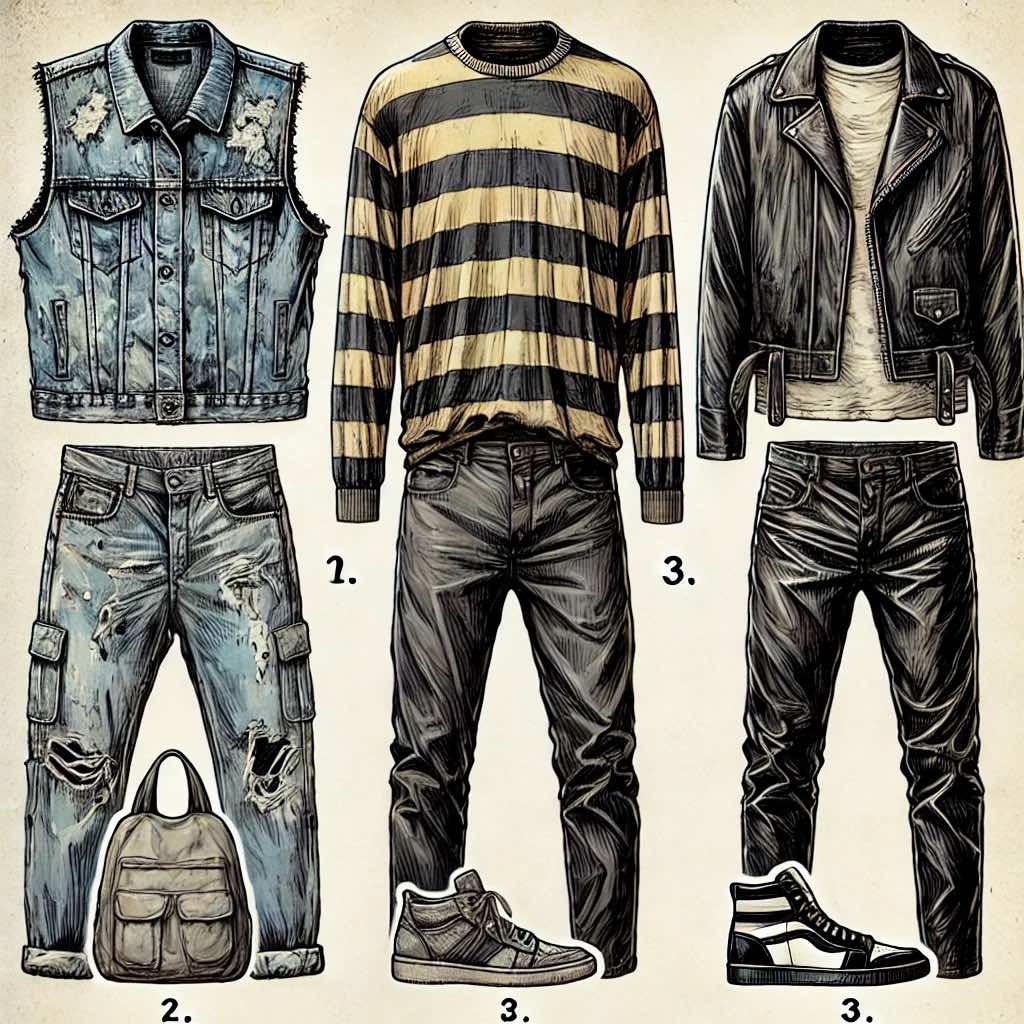
Kurt Cobain: Reluctant Fashion Icon
Although he never set out to be a style icon. Kurt Cobain’s personal fashion choices became synonymous with the grunge look. His thrift store cardigan sweaters, ripped jeans, and unkempt hair inadvertently created a blueprint for grunge style. Fans all across the world continue to aspire to this. Cobain’s influence extended far beyond music. Shaping the fashion sensibilities of a generation that sought authenticity and rejected the artifice of previous decades. His approach to dressing was a form of anti-fashion that paradoxically became highly influential in the fashion world. Even years after his death, Cobain’s style continues to be referenced and revered in fashion circles. Cementing his status as an enduring style icon.
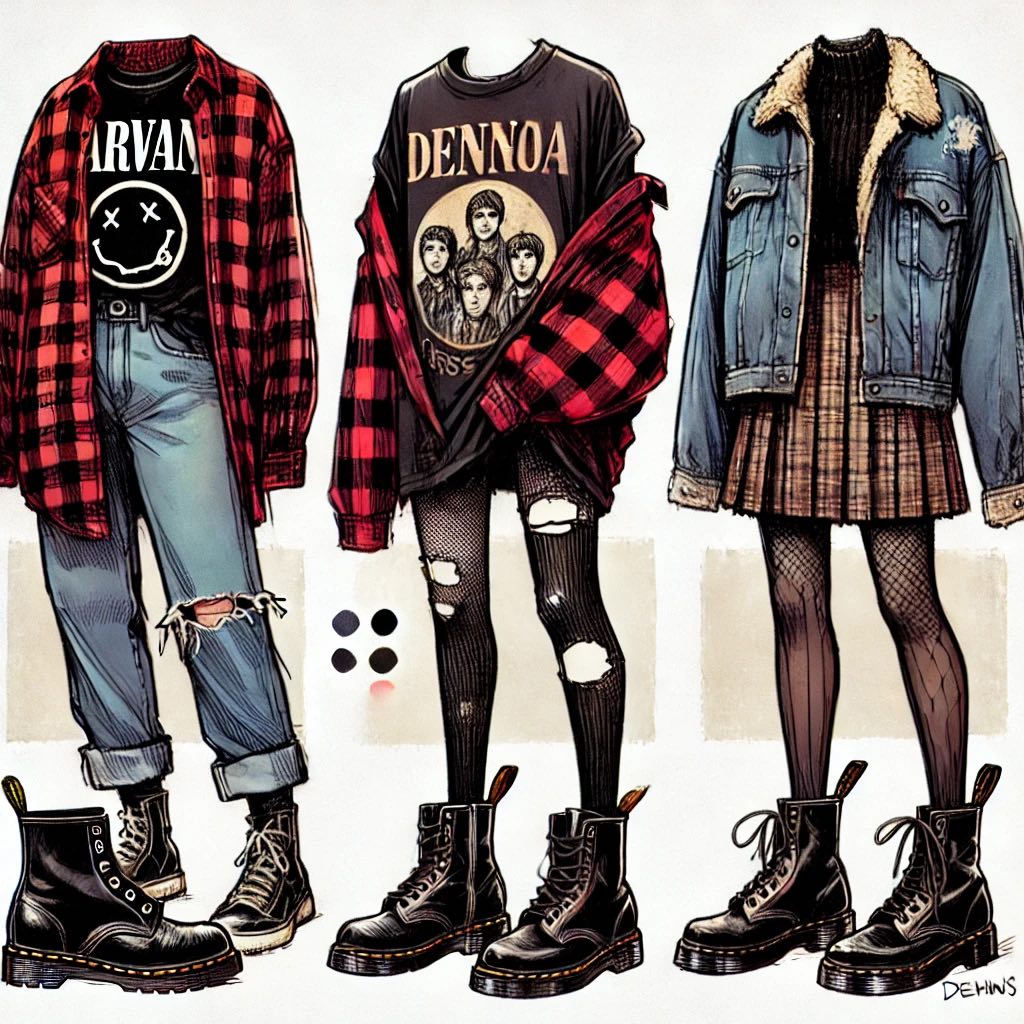
High Fashion Meets Grunge
The grunge aesthetic didn’t stay underground for long, quickly catching the attention of high fashion designers. In 1993, Marc Jacobs created a controversial “grunge” collection for Perry Ellis. Bringing street style to high fashion runways in a move that shocked the industry. While initially met with criticism, this collection is now considered a pivotal moment in fashion history. Blurring the lines between “high” and “low” fashion. Following Jacobs’ lead, other designers began incorporating grunge elements into their collections. Leading to a more relaxed and deconstructed approach to high fashion. This moment marked a significant shift in the fashion industry. Opening the door for street style to influence haute couture in ways that continue to this day.
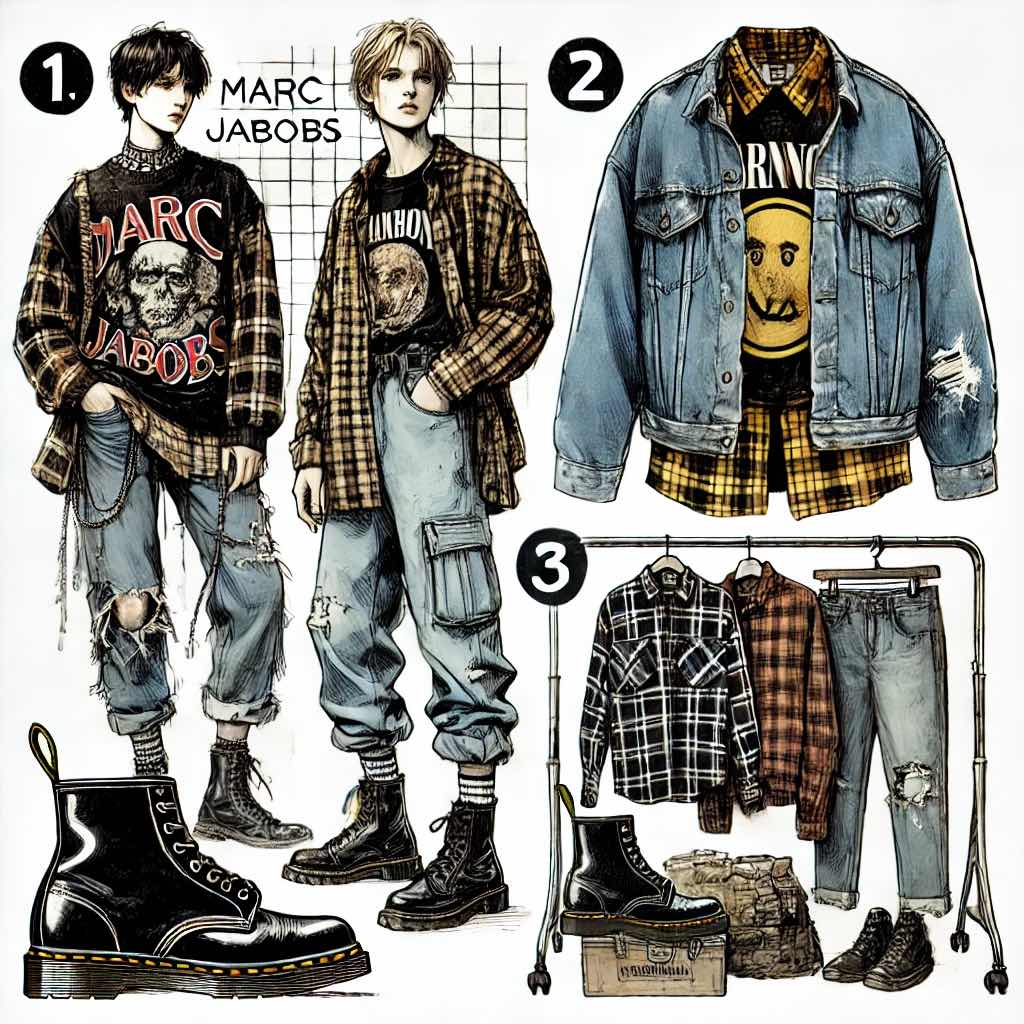
The Business of Grunge: Then and Now
The rise of grunge fashion created new business opportunities across various sectors. Thrift stores and vintage shops experienced a surge in popularity. As young people sought authentic, worn-in clothing to emulate the grunge look. The music industry saw increased sales of alternative and grunge music, a trend that has evolved into streaming popularity today. Iconic brands like Doc Martens and flannel shirt manufacturers benefited greatly, with many continuing to produce grunge-inspired collections. The beauty industry also capitalized on the trend, with grunge-inspired hairstyles and makeup looks becoming popular. Fast fashion retailers and high-end designers alike continue to draw inspiration from grunge. Releasing periodic collections that pay homage to the 90s aesthetic. Online marketplaces have also emerged as key players. Facilitating the buying and selling of vintage and grunge-inspired fashion to a global audience.
The Lasting Legacy of Nirvana’s Fashion Influence
Despite Nirvana’s brief time in the spotlight, their impact on fashion has proven remarkably enduring. The grunge aesthetic has seen several revivals since the 1990s, influencing both luxury brands and fast-fashion retailers with each resurgence. The emphasis on individuality and rebellion against conventional fashion norms. This is what Nirvana helped popularize and continues to resonate with new generations of fashion enthusiasts. Elements of grunge style, range from flannel shirts to combat boots. These have become timeless staples in many wardrobes, transcending their original context. This lasting influence demonstrates the power of authentic, youth-driven style movements to shape long-term fashion trends. Nirvana’s legacy serves as a reminder that sometimes the most impactful style statements come from. Even the most unexpected places, challenging the fashion industry to continuously evolve and adapt.
The Enduring Rhythm of Grunge in Fashion’s Fabric
As we’ve explored, Nirvana’s influence extends far beyond the realm of music. Leaving an indelible mark on fashion that continues to resonate today. From thrift store flannel shirts to designer runways. The grunge aesthetic they popularized has become a lasting part of our sartorial language. The band’s emphasis on authenticity and individuality challenged traditional fashion norms. In turn, paving the way for more diverse and inclusive style expressions. This legacy is evident in the periodic revivals of 90s fashion. It has continued the success of grunge-inspired brands, and the enduring popularity of vintage and secondhand clothing. Nirvana’s impact on both culture and commerce underscores the transformative power of authentic, youth-driven movements.
In addition to changing rock music, Kurt Cobain and his bandmates also contributed to the discovery and reimagining of grunge by subsequent generations. They did, however, also update the dress code. Their brief but remarkable career has helped to perpetuate that genuine style. Not only is attire important, but so are attitude, self-expression, and the guts to defy social norms. Nirvana’s creative legacy is ever-inspiring, just like their music. Additionally, their influence ensured their place in the annals of fashion as well as music history.


